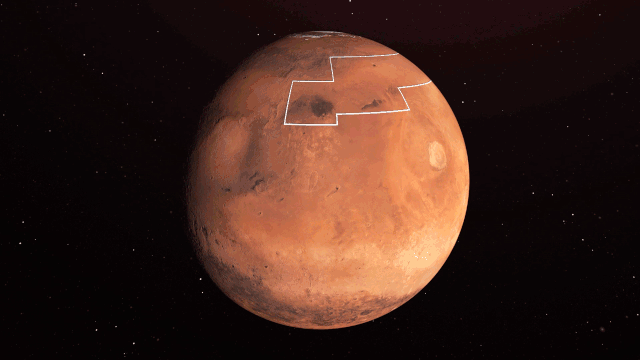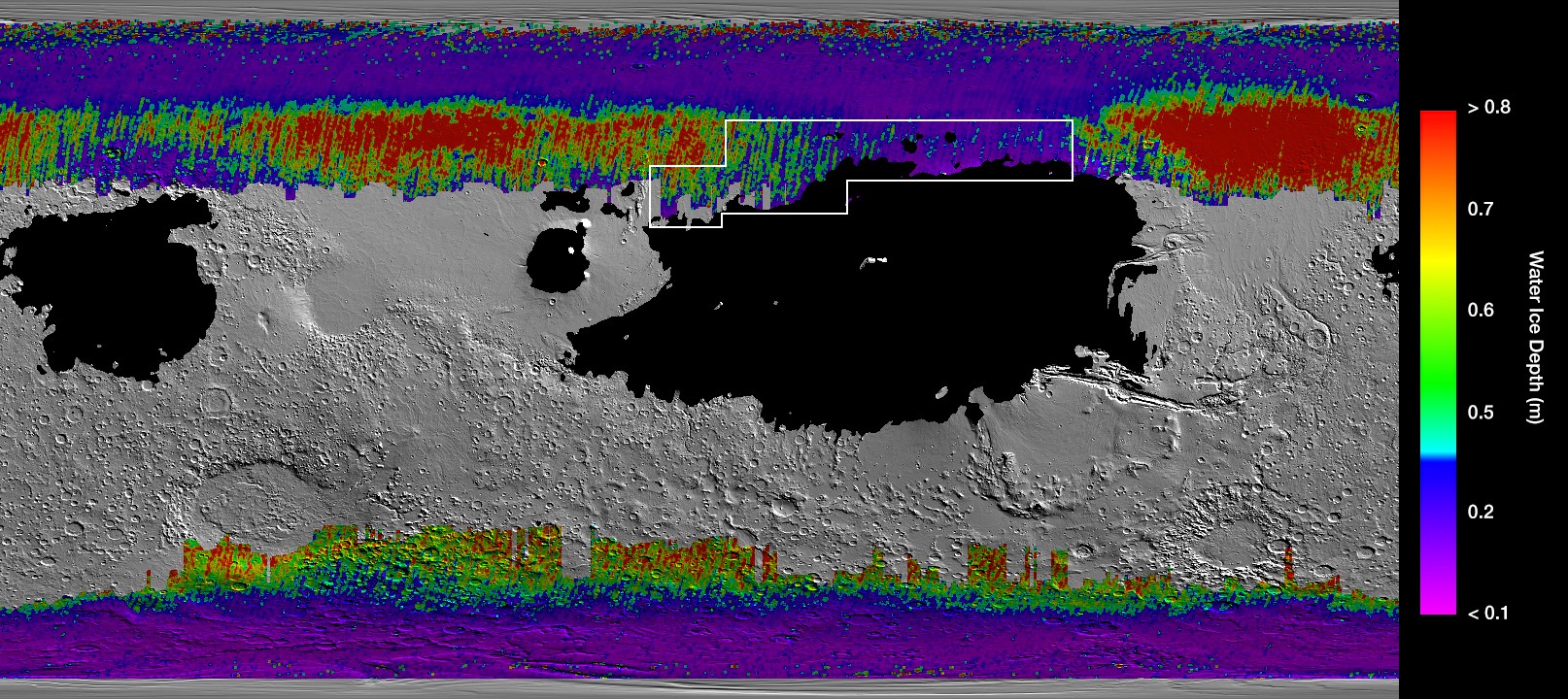NASA's 'Treasure Map' of Water Ice on Mars Shows Where Humans Should Land

NASA's wish to follow the water on Mars just got a helping hand.
Scientists have released a new global map showing water ice that is as little as 1 inch (2.5 centimeters) below the Red Planet's surface.
With data in hand, the research team located at least one promising landing spot for future astronaut missions: a big zone in the northern hemisphere's Arcadia Planitia. This area has a lot of water ice close to the surface and is in the ideal location for a human Mars mission, because it is in a temperate, midlatitude region with plenty of sunlight, the research team wrote in a new study describing the findings.
Related: Where's All the Water on Mars? Scientists (and Future Astronauts) Need to Know

"You wouldn't need a backhoe to dig up this ice. You could use a shovel," lead author Sylvain Piqueux, who studies planetary surfaces at NASA's Jet Propulsion Laboratory in California, said in a statement. "We're continuing to collect data on buried ice on Mars, zeroing in on the best places for astronauts to land."
Further study of the "treasure map" could unlock more landing locations, too, according to NASA. Water is a precious resource for future astronaut missions to Mars, where the space agency wants to land in the 2030s. The hope is that, instead of hauling all of the water astronauts will need from Earth to the Red Planet, astronauts could get their drinking water and the components of water (oxygen and hydrogen) for rocket fuel from Mars itself.
The new map is based on data from two long-running spacecraft: NASA's Mars Reconnaissance Orbiter and Mars Odyssey. Each spacecraft used heat-sensitive instruments to find the ice, because buried ice changes the temperature of the surface. To be sure that it was ice they were seeing, the scientists cross-referenced their work with other data — like ice seen in radar instruments and Mars Odyssey's gamma-ray spectrometer, which is optimized for spotting water ice deposits.
Breaking space news, the latest updates on rocket launches, skywatching events and more!
The surface of Mars is a desert; water is scarce. That's because liquid water evaporates quickly in the thin atmosphere of the Red Planet. There have been reports of briny water flowing on crater walls, but some scientists say those streams are more likely dry dust flows. Notably, there is plenty of water ice locked up in the Martian polar caps. But this wouldn't be a viable solution for a lengthy mission because it would get too cold and dark at the poles for a good part of the year.
Water did flow on Mars' surface in the ancient past, but that was because the atmosphere was much thicker back then. The leading theory is that the sun's particles gradually eroded the Martian atmosphere over the eons, until the atmosphere was so thin that it could not support running water anymore.
A paper based on the research was published Tuesday (Dec. 10)in the journal Geophysical Research Letters.
- Mars May Have Lots of Water Deep Underground
- Gigantic Ice Slab Found on Mars Just Below the Planet's Surface
- Mars Mystery: How Was Ancient Red Planet Warm Enough for Liquid Water?
Follow Elizabeth Howell on Twitter @howellspace. Follow us on Twitter @Spacedotcom and on Facebook.

Join our Space Forums to keep talking space on the latest missions, night sky and more! And if you have a news tip, correction or comment, let us know at: community@space.com.

Elizabeth Howell (she/her), Ph.D., was a staff writer in the spaceflight channel between 2022 and 2024 specializing in Canadian space news. She was contributing writer for Space.com for 10 years from 2012 to 2024. Elizabeth's reporting includes multiple exclusives with the White House, leading world coverage about a lost-and-found space tomato on the International Space Station, witnessing five human spaceflight launches on two continents, flying parabolic, working inside a spacesuit, and participating in a simulated Mars mission. Her latest book, "Why Am I Taller?" (ECW Press, 2022) is co-written with astronaut Dave Williams.
